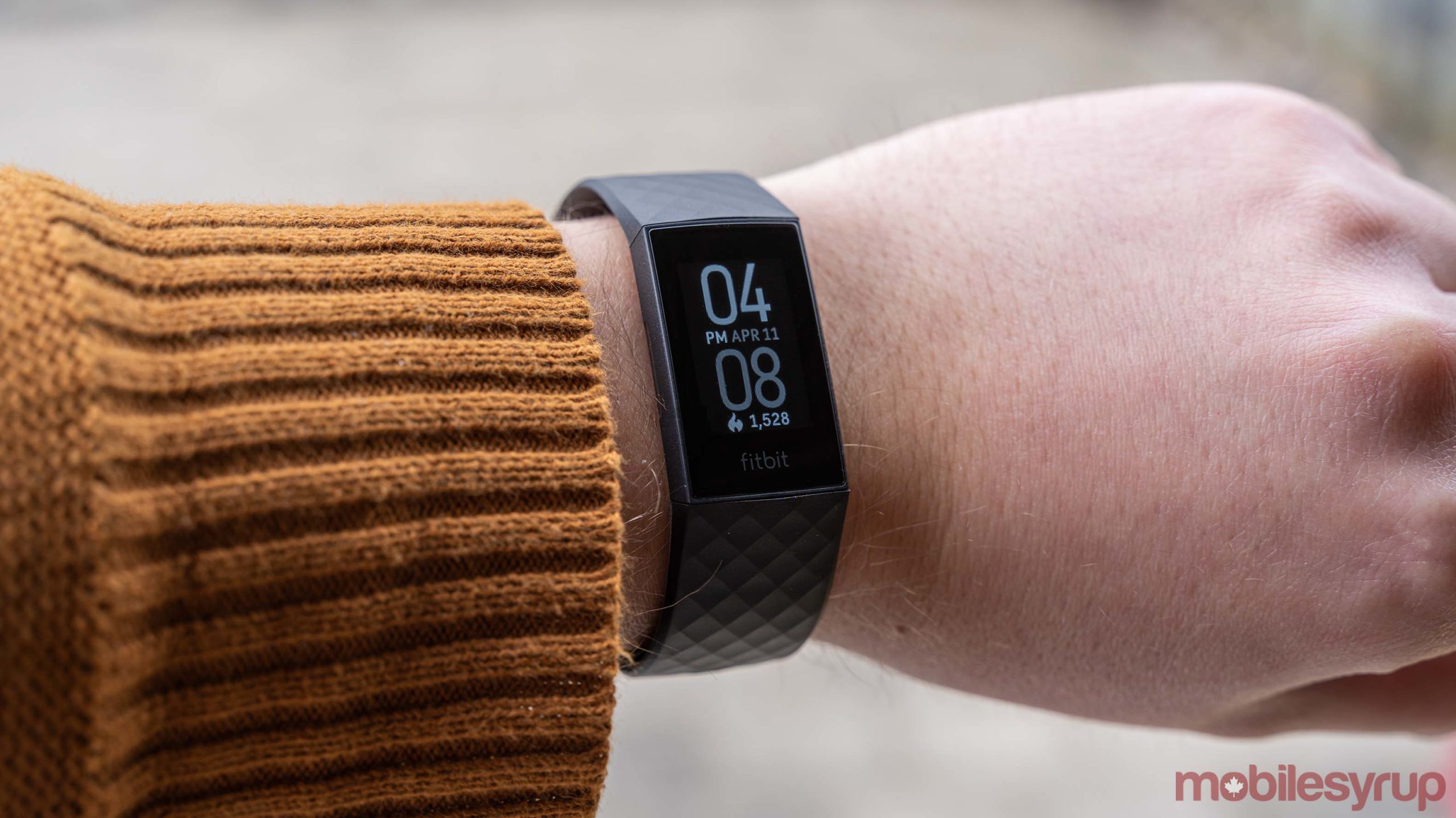
The Pros
- Finally has built-in GPS
- Active Zone Minutes better for personal fitness
- On-wrist Spotify controls
The Cons
- Small display makes smart features hard to use
- Recycled design
- Battery life
Fitbit’s trackers have occupied an odd spot in the tech world for some time. For many, they serve as a basic step counter, tracking your movements and estimating how many calories you’ve burned by your steps. Others find these trackers a decent compromise between affordability and smartwatch-like features.
For the exercise aficionados among us — of which I am certainly not one — Fitbit trackers are a way to track metrics like running pace, heart rate and more. The new Charge 4, however, seeks to go further.
Over the years, Fitbit has steadily expanded on what its devices can do. The company offers a variety of trackers and smartwatches, all with a focus on fitness. The Charge series arguably sits in the middle with more smarts than the average tracker but not quite enough to put it in smartwatch territory. The Charge 4 walks that line closer than ever before.
With the impending Google acquisition, there was concern that Fitbit’s devices may tend towards the smartwatch side and away from fitness. However, as the first new product following the acquisition announcement, the Charge 4 is squarely a Fitbit device.
New features, who dis?

In fact, you’d be hard-pressed to differentiate the Charge 4 from 2018’s Charge 3 just by looking at it. There are subtle differences, mostly related to colours and textures, that could tell you which is which. Beyond that, they look identical.
But don’t let the appearance fool you. The Charge 4 packs some significant steps forward for the Charge line when it comes to features. For example, the Charge 4 is the first Fitbit tracker with built-in GPS, a long-sought feature among runners and hikers. It also has access to Fitbit Pay on the base model, improved sleep tools and even some smartwatch-like features such as Spotify control.
However, many of those new additions are also software-based. That means some are launching on the Charge 4 but will eventually come to older Fitbit devices. Others are already available on the company’s smartwatches but have finally come to the trackers through Charge 4.
The Fitbit Charge 4 isn’t expensive — at least by the standards of other smartwatches — at $199.95 in Canada. However, if you have one of Fitbit’s older smartwatches or trackers, you may find that a tough sell. The new features, which we’ll dig into more below, are welcome. Unfortunately, in most cases, they may not be enough to justify dropping $200 on an upgrade.
Benefits to looking the same

While I’d love to see a refreshed design for the Charge 4, I think Fitbit made the right call in sticking with the same look as the Charge 3. For one, there was nothing wrong with the look of the Charge 3, and if it ain’t broke, don’t fix it.
By rocking the same design as before, the Charge 4 ensures backwards compatibility with accessories made for the Charge 3. And for those who want to hold on to their Charge 3 for a while longer, you can use the new Charge 4 bands and accessories as well.
Speaking of Charge 4 bands, I found the ‘granite’ colour fabric band included with the Charge 4 Special Edition to be uncomfortable. It looks nice, but for something that I wear as much as a watch, comfort takes priority.
Unfortunately, it appears Fitbit left much of the internals the same as well. Like the Charge 3, the new Charge boasts a seven-day battery life. I only had a few days to test the Charge 4 between when it arrived and when this review was published, which isn’t nearly long enough to get a firm grasp on something like battery life. That said, in those few days I noticed the battery fell by around 15 to 20 percent per day under what I would classify as normal usage.
Update 17/04/2020: This review initially detailed issues with the Charge 4’s battery life. However, after spending more time with the tracker, the battery life normalized and it was able to last seven days as advertised. Unfortunately, there’s a caveat to go with it. The new GPS feature can impact battery life significantly, which is why I saw such significant battery drain in the first few days of testing. The battery life was much better on days when I did not use the GPS feature.
The issue here is that GPS is a significant new addition to the Charge line. While understandable that it has a huge impact on battery, I would have liked to see battery improvements to compensate for this.
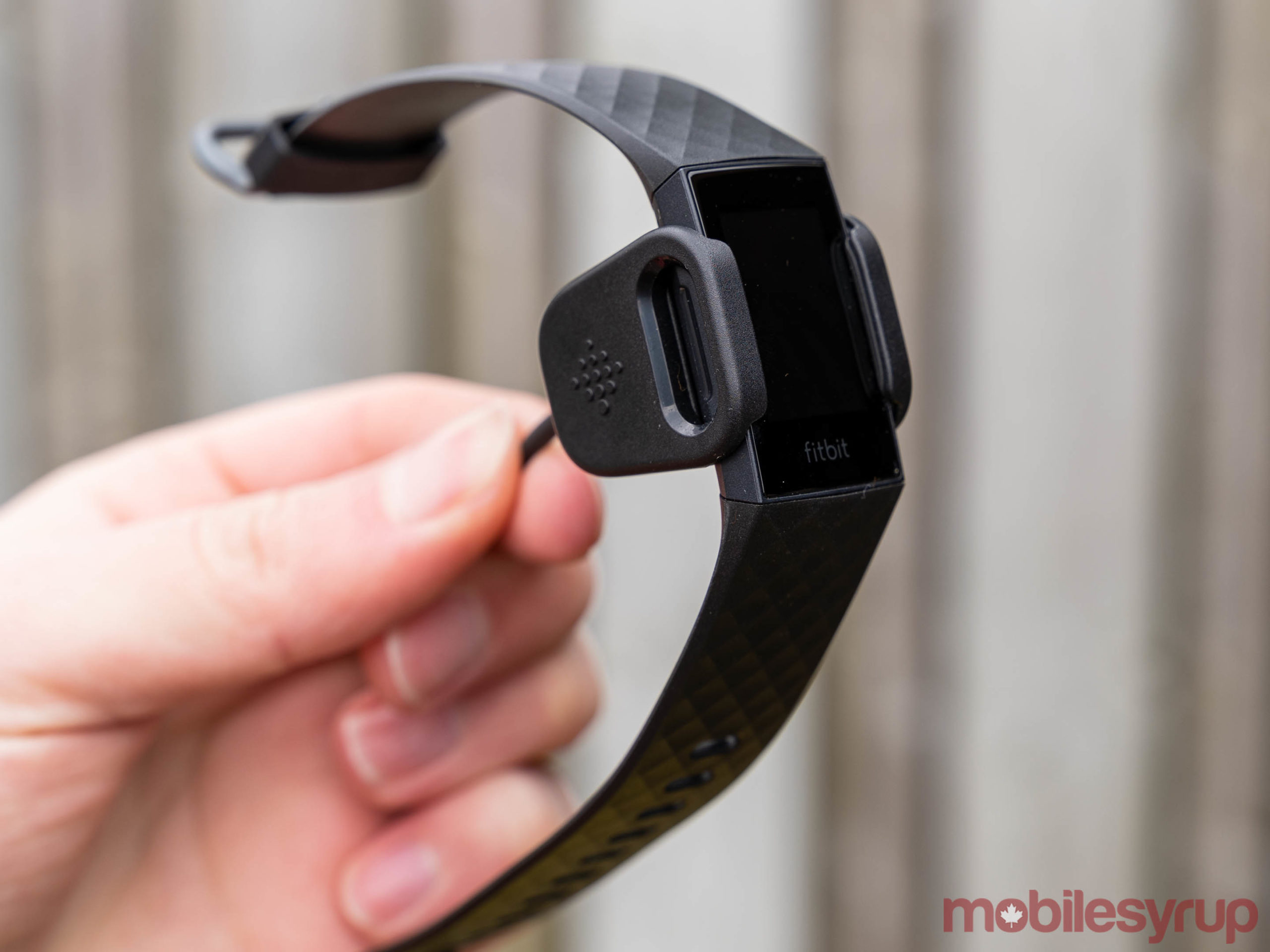
Even though the Charge 4 meets its seven-day battery claim, I expect more from a device with the Charge 4’s feature set. The Withings tracker I usually wear lasts weeks on a charge and does almost everything the Charge 4 can, sans GPS tracking.
A Charge with longer battery life would be a welcome change, especially considering the mediocre charging experience. Recharging the tracker still relies on an awkward plastic claw/cradle that latches onto the bottom of the device. Further, the included cable is about a foot long, making it especially annoying to charge.
Monochrome OLED gets the job done

The Charge 3’s monochrome OLED touch display also makes a return and, like before, brightness can be a frustration. When outside, the screen can be hard to read, especially in direct sunlight. Worse, the Charge 4’s ‘Sleep Mode’ is essential if you don’t want the screen lighting up and disturbing you at night.
Thankfully there’s an option to have Sleep Mode turn on automatically (you can find it in the ‘Settings’ menu on the Charge 4). I found it helpful as I tend to forget to turn it on manually. However, with all the sleep tracking tech packed into the Charge 4, it would be great if the company figured out a way to automate this process.
As for software, the experience is mostly the same as the Charge 3. That means lifting your wrist or pressing the inductive side button turns on the display. Users can swipe down to view notifications, up to see battery level, steps and other metrics, or from right-to-left to scroll through apps. Pressing the button will take you back to the previous screen.
For the most part, this works fine. However, I often encountered stuttering and slow responses to input. Plus, with the additional features, navigating menus on the tracker feels more tedious. For my part, I’d like to have a bigger display for these things, but that would put the Charge 4 into smartwatch territory.
One bit of praise I must give the Charge 4 is that it’s remarkably light. I don’t feel it on my wrist at all, which is excellent.
Better workout tracking through GPS, heatmaps and more
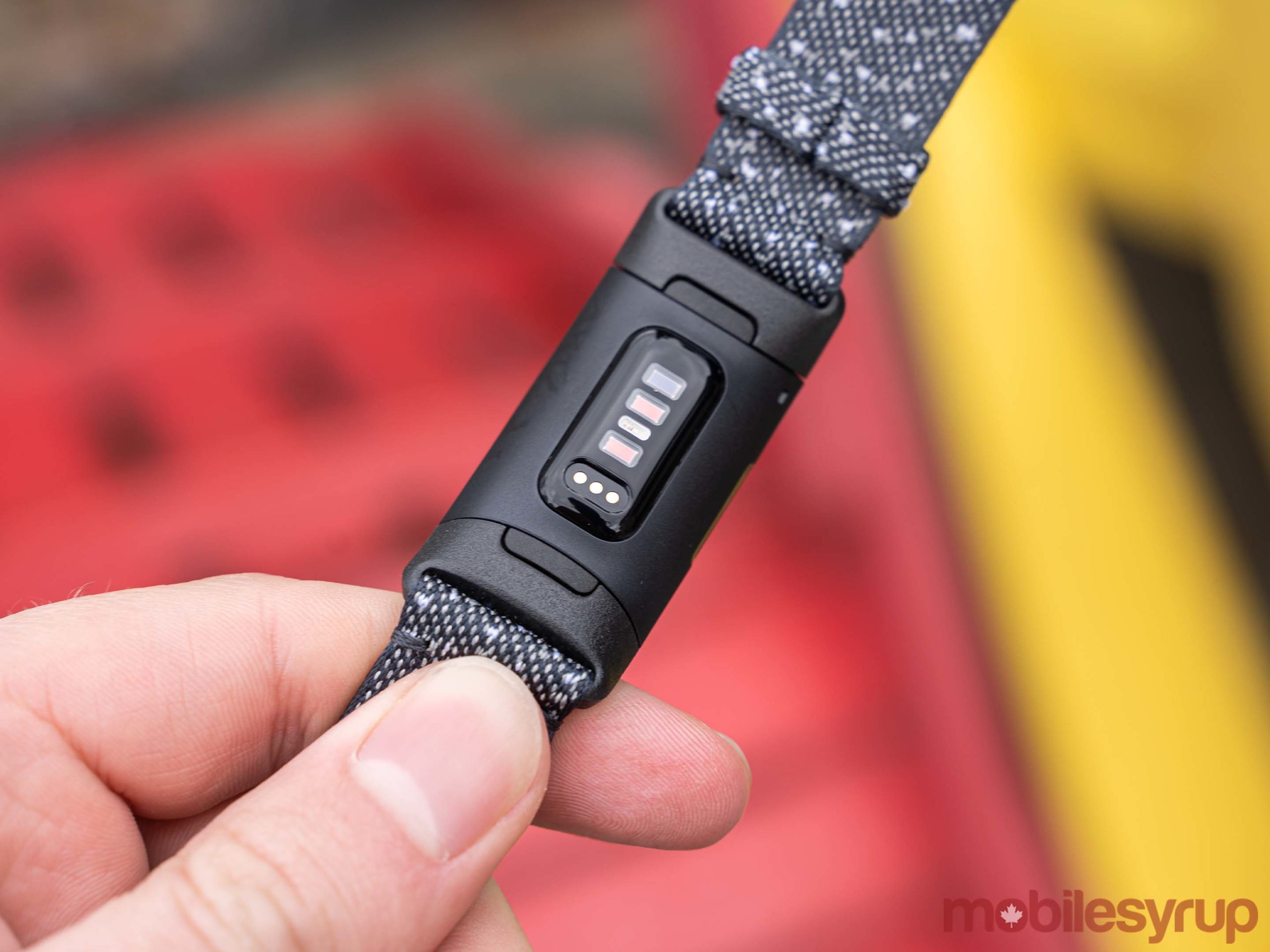
The standout new feature of the Charge 4 is built-in GPS support, something previously only offered on some of Fitbit’s smartwatches. In short, this means Charge 4 owners will be able to use GPS tracking in their workouts without needing to bring a phone with them. Plus, the Charge 4 displays real-time information about pace and distance on runs, hikes, walks and bike rides.
Further, the Fitbit app on your phone can use the GPS data to construct a workout intensity map. That includes a breakdown of your heart rate zones (more on this below) as well as pace.
Of course, the irony of writing about such a feature amid a global pandemic that has most people restricted to their homes is not lost on me. That said, I still found the heat map informative when reviewing my short, physical distancing strolls around my neighbourhood. I imagine that a runner, hiker or cyclist will get much more out of the feature than myself and doubly so when the COVID-19 crisis is over.
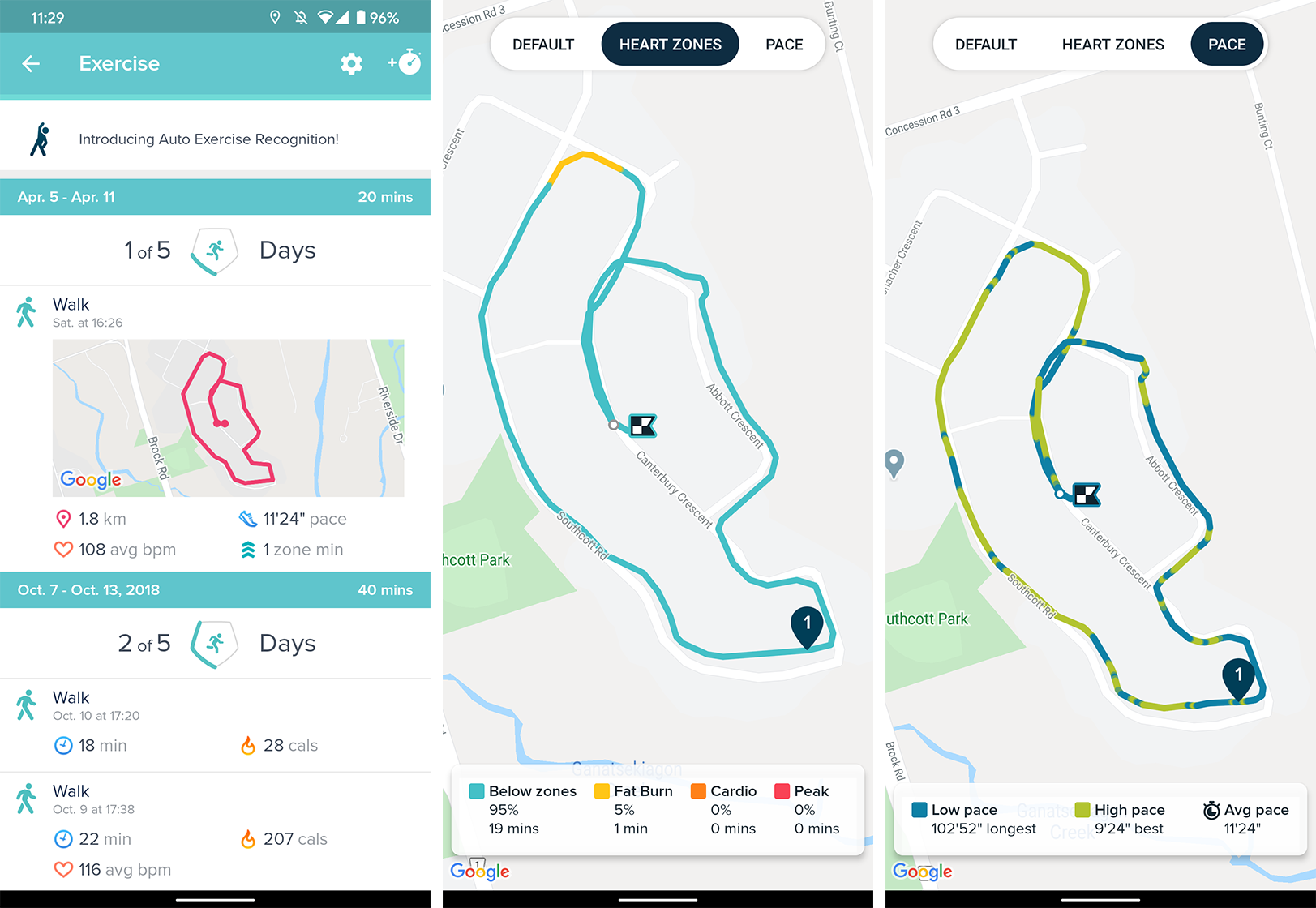
As for the privacy-conscious out there, the GPS feature isn’t enabled all the time. When you start outdoor exercises like going for a run, you have to select the ‘Exercise’ option on the Charge 4, pick the type of activity and toggle GPS on or off if you want it (it was on by default for me). That means Fitbit starts GPS tracking when you start exercising and doesn’t track you all the time.
Active Zone Minutes provide personalized metrics
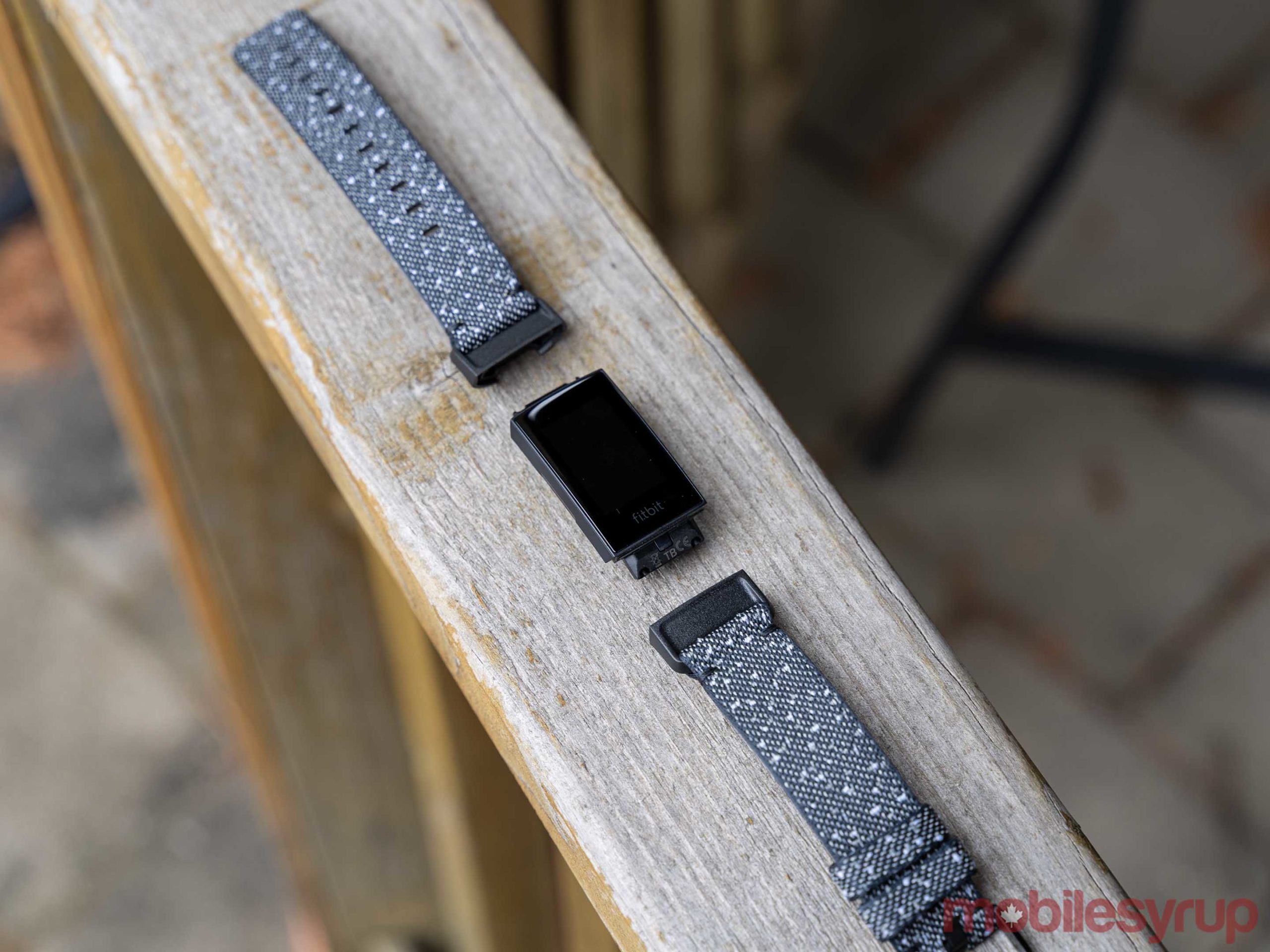
The other significant addition with the Charge 4 is Active Zone Minutes. Arriving first on Charge 4 before heading to other Fitbit devices, Active Zone Minutes use your age and resting heart rate to provide more personalized measurements of how hard you work while exercising.
The measurement goes beyond just counting steps by marking out ‘Fat Burn,’ ‘Cardio’ and ‘Peak’ zones and measuring time spent in each one based on things like your heart rate. The idea is that Active Zone Minutes can measure how hard you push yourself during a workout along with standard metrics like distance or pace.
Further, the Charge 4 delivers real-time alerts to users’ wrists when they change zones. This can help users exercise efficiently by tuning their workouts and pushing harder or scaling back at the right time.
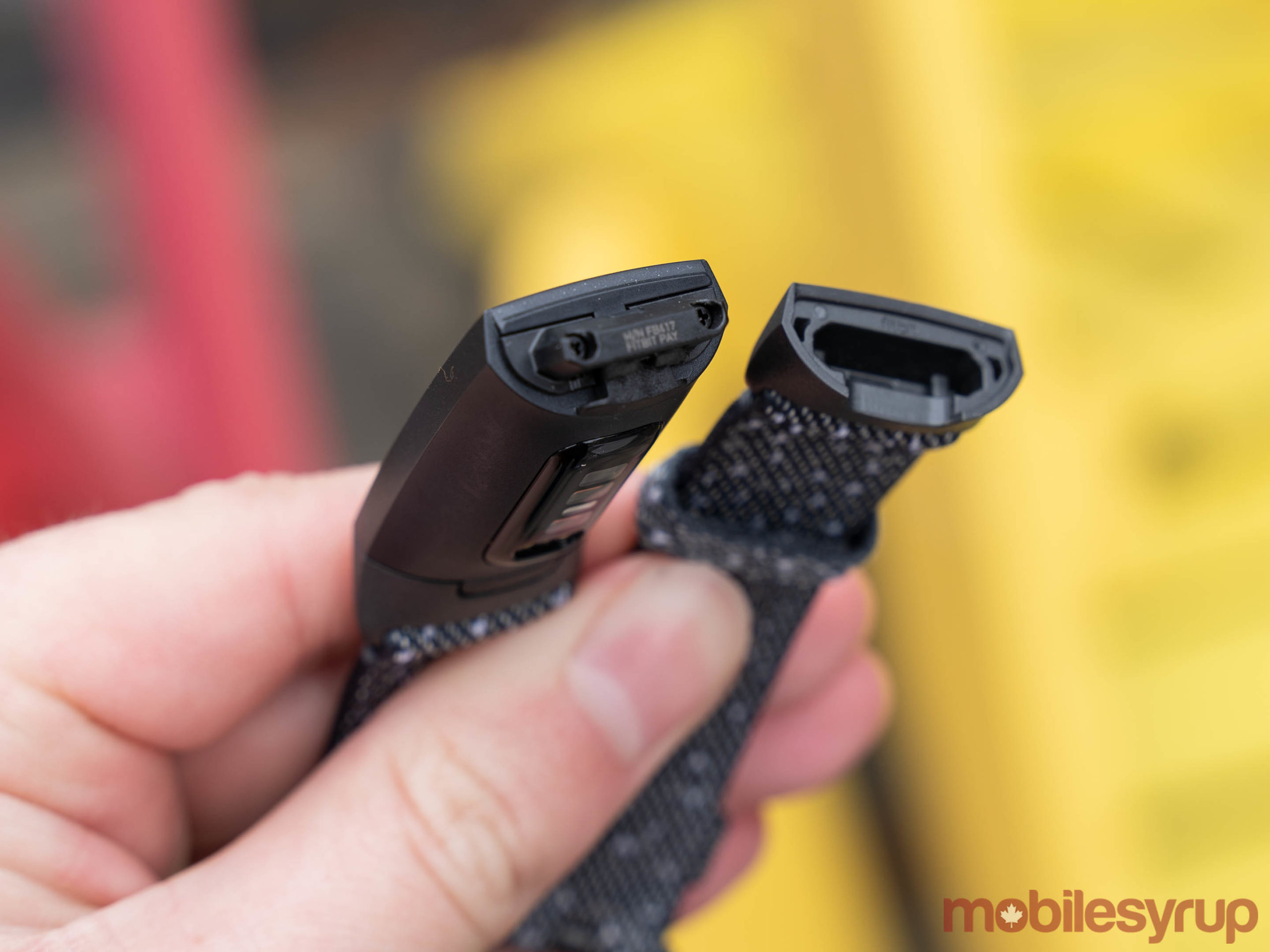
Fitbit says it assigns a default goal of 150 Active Zone Minutes per week based on guidelines from the American Heart Association and the World Health Organization. Users can customize that number if they see fit.
Further, the Fitbit app automatically calculates how many minutes you’re logging in zones for your total. For example, Fat Burn minutes count one-to-one against your goal while active minutes in the Cardio and Peak zones count double.
While the Charge 4 still counts steps, Fitbit is trying to shift the focus with its trackers. I think it’s the right thing to do. In my experience, you can get a lot of steps without pushing yourself hard. Active Zone Minutes will hopefully shift the focus to activities that get users’ hearts pumping instead of just walking a lot.
A more intelligent tracker

Finally, Fitbit added a few new smart features to the Charge 4 that should bring it more in line with the company’s smartwatches. To start, the Charge 4 includes support for Fitbit Pay, which allows you to pay with your wrist.
The Charge 3 also supported the feature, but only on the more expensive Special Edition model. It’s nice to see Pay come to more wrists, although you may want to avoid using it until after the COVID-19 pandemic.
Additionally, the Charge 4 supports Fitbit’s improved sleep tools, including the Sleep Score feature and the new Estimated Oxygen Variation Graph with SpO2 sensor.
On top of that, Fitbit says the Charge 4 will get access to the ‘Smart wake’ feature available on other Fitbit devices. Smart wake lets you set a smart alarm, and the watch will wake you at the ‘optimal’ time. Smart wake wasn’t available at the time of writing and is “coming soon.” Unfortunately, Fitbit didn’t include this as a launch feature on the Charge 4. It’s been a long time coming — many other trackers offer similar functionality and have done so for years.
Users can also connect their calendar to Fitbit and access it through the ‘Agenda’ app on the Charge 4.
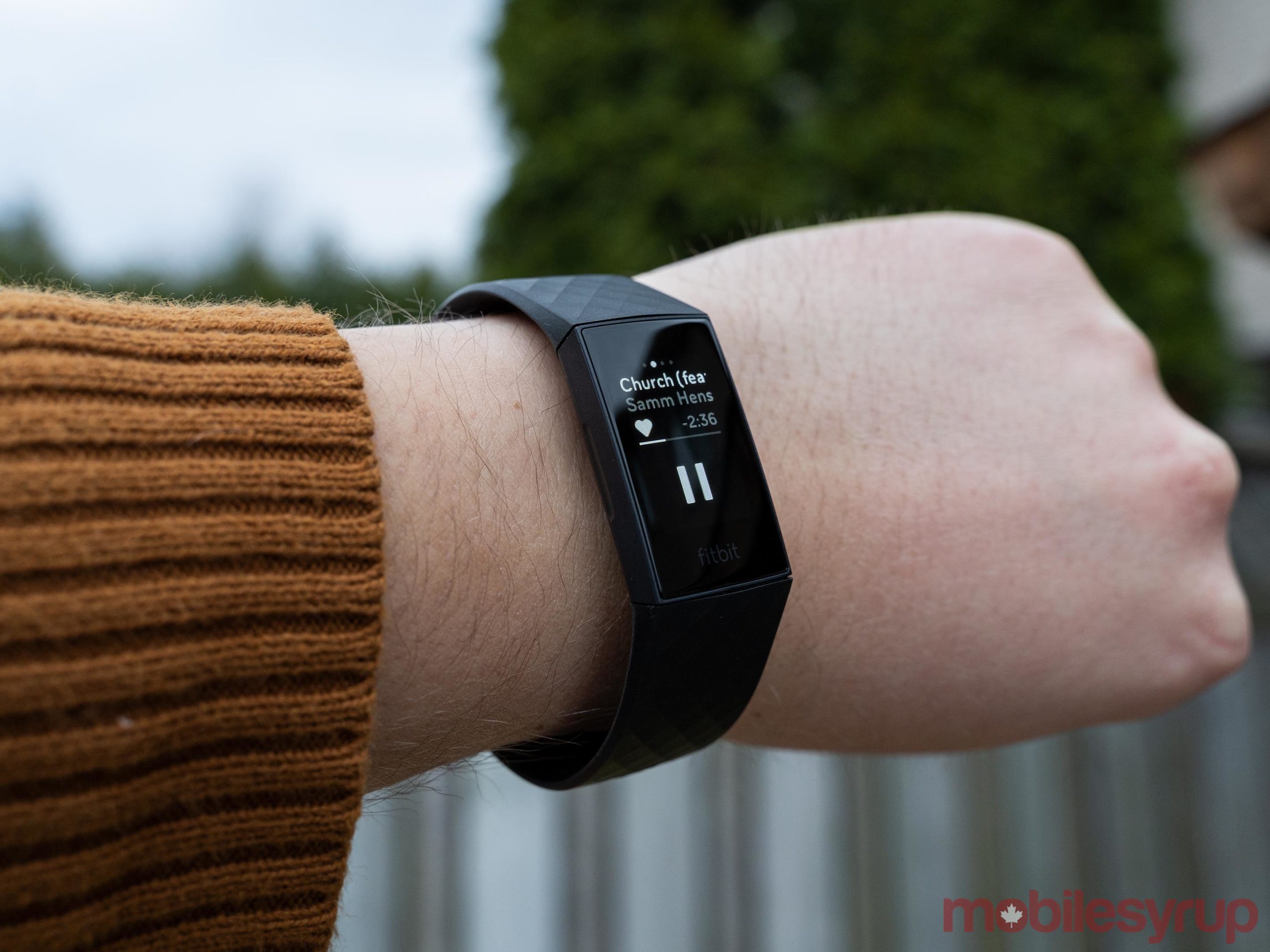
Finally, a small but welcome addition is Spotify support. Charge 4 owners will be able to connect their Spotify Premium accounts to the tracker with the Fitbit app. Once connected, you can control Spotify from your wrist. That includes play, pause and skip controls, as well as the shuffle button. Further, you can ‘heart’ a song to add it to your library from the Charge 4 and even scroll through a list of recent and liked songs and albums to play.
Perhaps the most interesting part of the Spotify support is it appears to leverage the service’s ‘Connect’ platform. Even though I had the Charge 4 connected to my Pixel 4, I was able to control Spotify playing on other devices connected to my Premium account with the tracker
The Charge 4 meets the upper limits of a fitness tracker
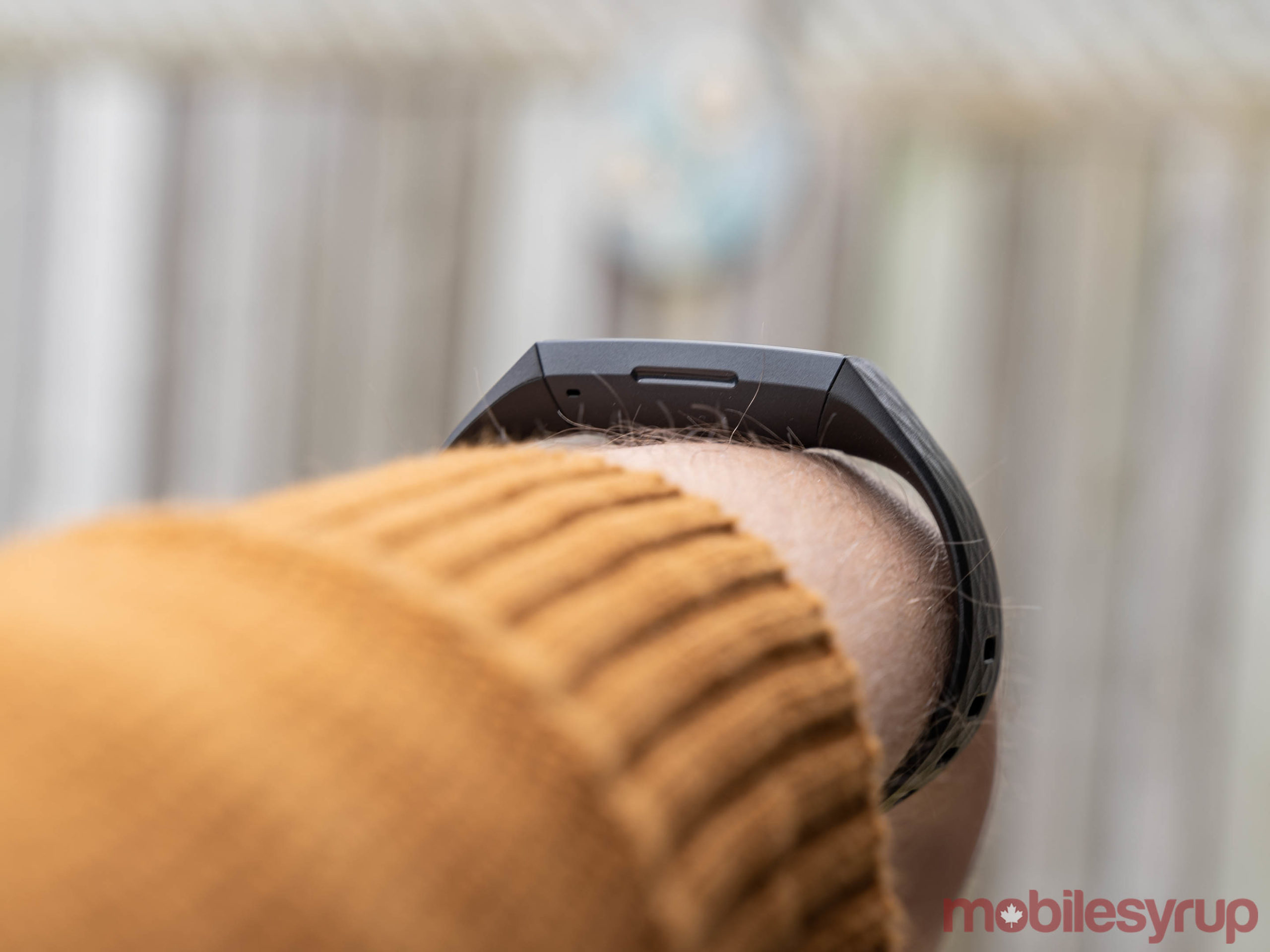
By almost every measure, the Charge 4 is an excellent device. Yes, I have my quibbles with some of the hardware, but in most cases, those small annoyances don’t distract from the good.
Fitbit accomplished a lot with the Charge 4, and it should be proud of the product. However, the company is also brushing up against the upper limits of the fitness tracker. Smart features like Spotify control are tremendous but feel restricted on such a small screen.
However, putting a bigger screen into a Charge series device would also up-end some of the benefits of the current design, namely the weight. Being so small and light, the Charge is an excellent addition to the wrist of any athlete. It tracks away without hindering what you’re doing.
Ultimately, deciding whether to buy the Charge 4, another Fitbit device or a different brand of fitness tracker should come down to how you want to use it.
If your primary goal is tracking fitness and smart features come secondary, you won’t be disappointed with the Charge 4. However, if you value things like Spotify control, notifications and other smart features, consider the Fitbit Versa Lite or Versa 2.
For the same money or about $50 more than the Charge 4 respectively, you'll get a very similar feature set paired with a larger, better display. You'll be able to enjoy smart features more while still having access to Fitbit's excellent fitness tracking software, albeit without some of the new fitness features on the Charge 4.
If you're a Charge 3 owner considering an upgrade, the real difference-maker will be the built-in GPS support. Almost every other feature will come to your device via software updates in the future. Unless the GPS features make a significant difference for you, I'd recommend saving your money for now.
The Fitbit Charge 4 will be available in Canada starting April 13th, 2020, for $199.95. The Special Edition costs $219.95.
Update 17/04/2020: Added more detail about the Charge 4's battery life after further testing.
"The Charge 4 walks a thin line between fitness tracker and smartwatch and will make a great addition to any athlete's wrist"
MobileSyrup may earn a commission from purchases made via our links, which helps fund the journalism we provide free on our website. These links do not influence our editorial content. Support us here.


